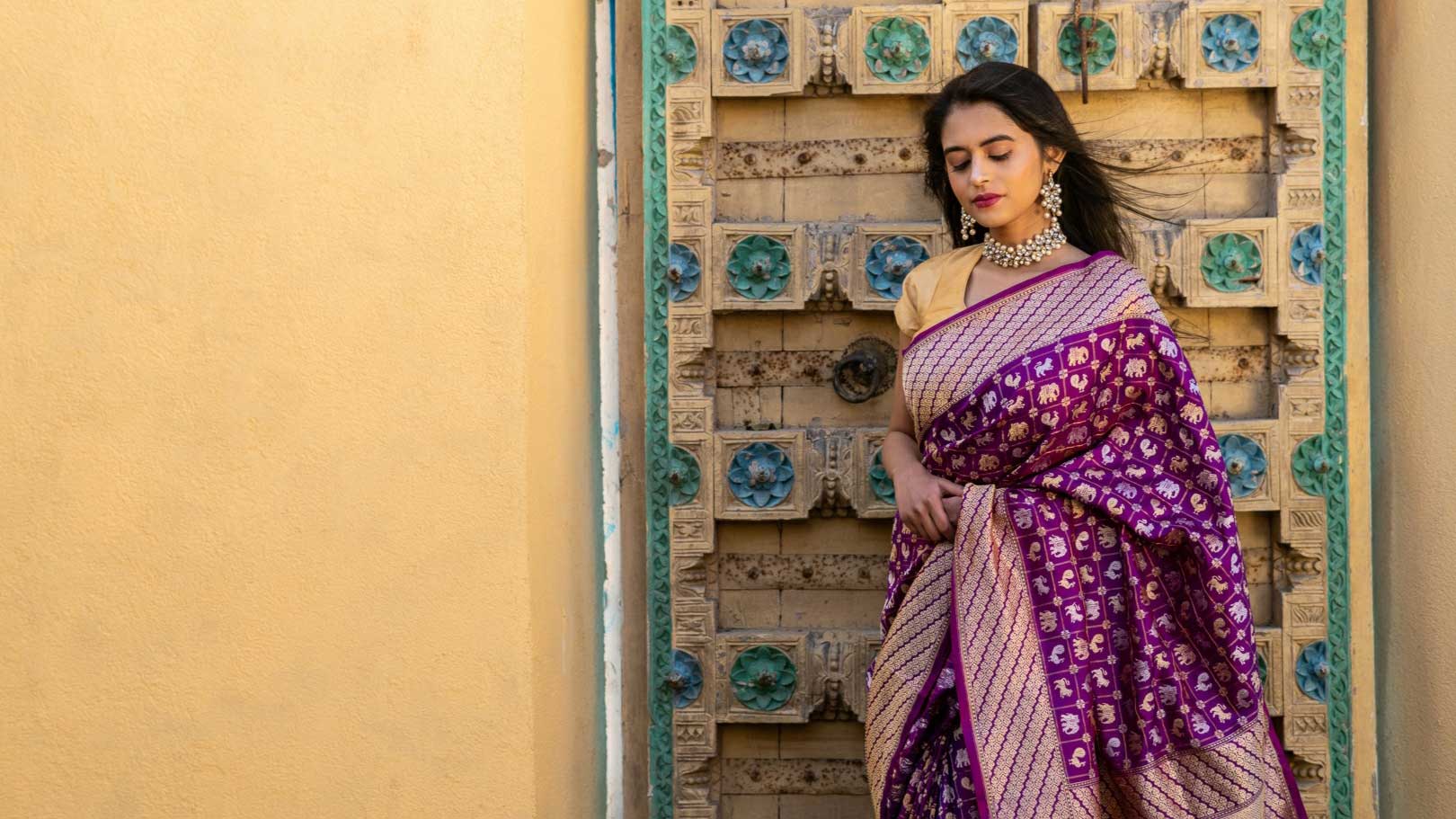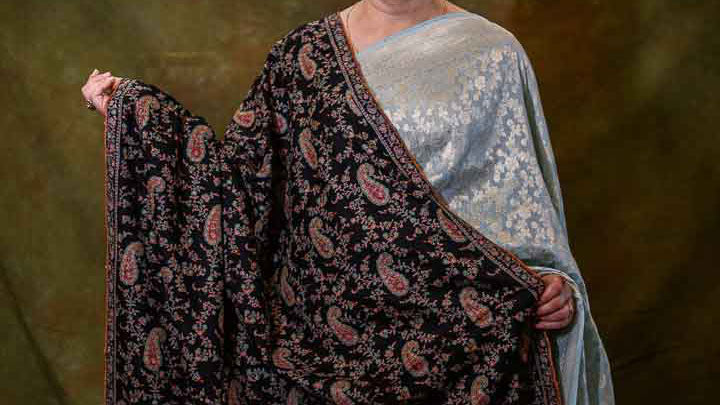Weaving Process
We ensure that all our designs and patterns are based on ethnic and traditional Banaras textiles. Our weavers come from various backgrounds, many of them are born in to traditional weaving families and having learnt the skills from their fathers or grandfathers, and all of them are specialized in their work.
- Design Making:
Most important process of making a saree begins with deciding its design.
Our aim has always been to have timeless designs with classical motifs and patterns, whose beauty doesn’t fade away. Our designs stand the test of time, as opposed to passing trends, and communicate shared history, as well as values connected with the age-old Banaras textiles.
After having decided the design, it is then translated onto a graph paper inch by inch, this process is called ‘Likhai’(Drawing the design). The grapher who executes this process is known as the ‘Nakshaband’ in local language of Banaras. The Naksha is designed very carefully and precisely as it acts as a blueprint and this Naksha is hand punched on cardboard stencils called ‘Naksha Pattas’.
After this, the Naksha Pattas(Punch Cards) are linked in a chain-like structure and attached to the jacquard loom. These Naksha Pattas form the system required to lift the Silk Yarn of the Warp during the process of weaving, to help weave the right pattern on to the fabric. The number of punch cards that are required in the process of weaving varies on the choice of design of the Banaras saree. More complex and intricate patterns require a bigger size and large number of Naksha Pattas.
- Raw Materials:
After the design making, the next important step is the procurement of raw materials and the verification of their usability. This process begins with the selection of the silk yarn, which is available in the market in various qualities and thicknesses. Deep knowledge of right type and thickness of Silk Yarn helps weaving a perfect fabric in various type of weavings in Banaras.
Types of Zari used in Banaras:
There are several different types of Zari used in Banaras Hand Weaving Cottage Industry.
- Pure Zari:- Real Zari is made from fine silver or gold thread is drawn from silver or gold alloys, these silver threads are wound on the base yarn that is usually made of silk. These spools with silk and silver threads are electroplated with gold. These threads are then wound on a reel.
- Tested Zari:- As copper is the most malleable and ductile metal after gold and silver, an alloy of silver and copper electroplated with gold replaced pure zari to cut the cost and is second best type of Zari used in Banaras.
- Metallic Zari:- This type of Zari is made with an alloy of Copper and other metals and generally used by most weavers in Banaras. Various versions (from lower to higher grade) of Metallic Zari is available in Banaras, and weavers use different types of Metallic Zari, which also determines the cost and life of the Zari from tarnishing hence determines the durability of the Saree and the Fabric.
- Reeling:
The process of tying the yarn in a bundle is known as reeling. This process involves the mounting of separate threads on the reeling machine, for the warp (tana) the yarn is stretched rolled on a beam (turia). The yarn for weft (bana) is firstly mounted on a charkha and then rolled on the bobbin(dharki).
- Dyeing:
At this stage, the yarn is dyed in a particular color by immersing the reel or cheese of yarn in the dyeing tank.
- Weaving:
This is the most complicated part of the whole process. Here, the sari is woven on a handloom. Traditionally, Banarasi sarees are woven on jacquard pit looms. The tana (warp), the longitudinal threads, are placed in a shuttle. The warp and weft threads are interwoven as the shuttle moves back and forth.
6. Iterations:
Iterations mark a crucial stage in the making of a saree. This stage involves actions such as the choosing and balancing of colors in a pattern, specially weaving any Saree or Fabric with Meenakari workmanship, choosing the sequence of Silk and Zari threads. The reason for this part to be such an integral one in the designing process is because it determines the overall aesthetic appeal of a handwoven textile.
7. Finishing:
Banaras sarees go through the process of cutting depending upon the weaving technique that was employed in the creation of the textile, mainly in Katraunwa(Cutting) Technic. At this stage the tiny silk or zari threads that were remaining at the back side of the fabric are manually cut. Kadwa(Kadhua) and Tanchoi/Jamwar technic does not have any loose threads remaining on the back side to be cut. After this, the sarees are ready to be folded, packaged and delivered right to your home!








